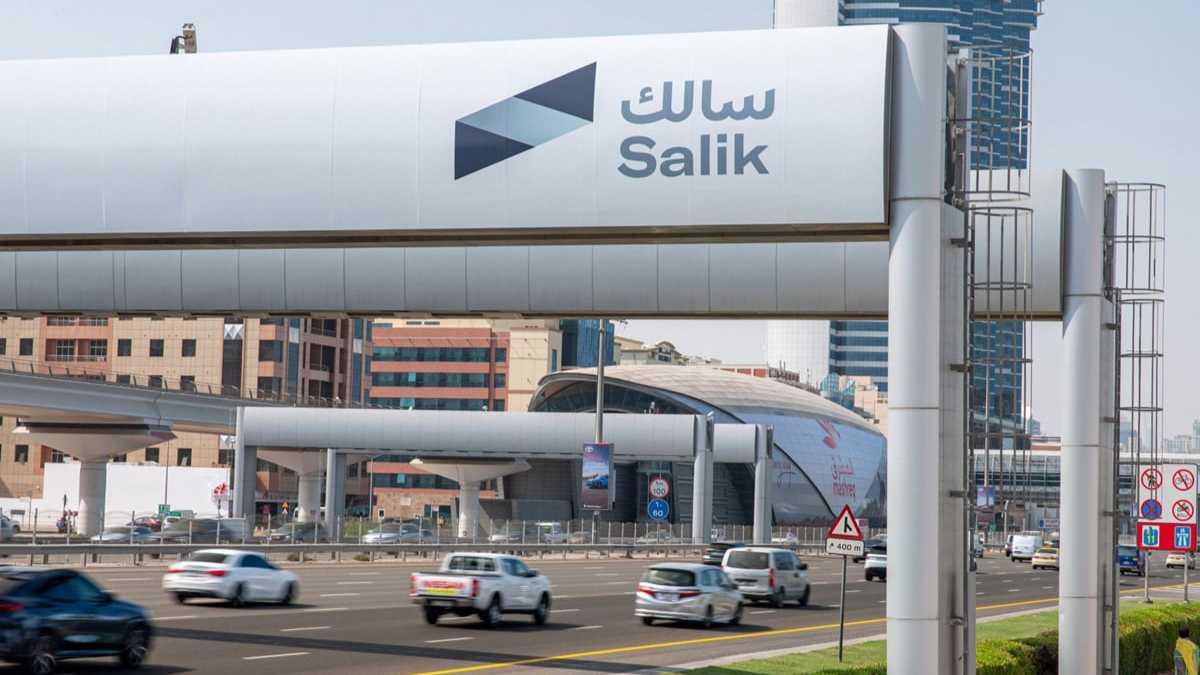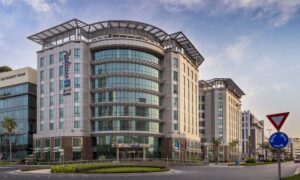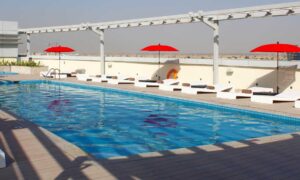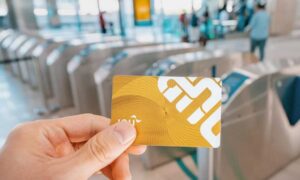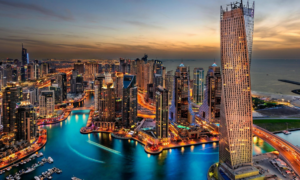Dubai’s dynamic road network is about to see a significant upgrade with the addition of two new Salik toll gates. Announced by the Roads and Transport Authority (RTA), these gates will be operational as early as November this year. This development is set to impact key routes across the city, particularly on Al Khail Road and Sheikh Zayed Road, making a considerable difference in traffic management and commuting efficiency.
Location of the New Salik Gates
The new Salik toll gates will be strategically positioned to manage traffic flow in some of Dubai’s busiest areas. The first gate will be located on the Business Bay Crossing along Al Khail Road, a vital artery connecting various parts of the city. The second toll gate, known as the Al Safa South Toll Gate, will be installed on Sheikh Zayed Road, specifically between Al Meydan and Umm Al Sheif Streets. These locations have been carefully chosen to optimize traffic distribution and ease congestion on these major routes.
Impact on Traffic and Commuting
The introduction of these new Salik gates is not just a step towards generating revenue but a well-calculated move to enhance the overall traffic management system in Dubai. As explained by Mattar Al Tayer, Director General and Chairman of the Board of Executive Directors of the RTA, the primary objective is to distribute traffic more evenly across the road network. By doing so, the city aims to reduce congestion on key roads, providing a quicker, easier, and more efficient route for those who opt to drive.
Business Bay Crossing Gate Impact
The Business Bay Crossing Gate on Al Khail Road is expected to significantly reduce traffic congestion on this vital route. According to projections, the new toll gate will decrease traffic on Al Khail Road by 15 percent. Additionally, Al Rebat Street, another busy corridor, is expected to see a 16 percent reduction in traffic volume. These reductions are crucial for maintaining smooth traffic flow and ensuring that the roads remain efficient for all users.
Al Safa South Gate Impact
The Al Safa South Gate on Sheikh Zayed Road will play a pivotal role in managing traffic flow in the surrounding areas. The new gate is anticipated to reduce traffic turning right from Sheikh Zayed Road to Al Meydan Street by 15 percent. Furthermore, it is expected to decrease the traffic flow from Al Meydan and Al Safa Streets to Sheikh Zayed Road by an impressive 42 percent. This will not only alleviate congestion but also enhance the overall driving experience on one of Dubai’s busiest highways.
Overall Traffic Distribution Benefits
The strategic placement of these toll gates is part of a broader plan to optimize traffic distribution across Dubai’s road network. For instance, the RTA expects a 4 percent reduction in traffic volume on Sheikh Zayed Road between Financial Centre and Latifa Bint Hamdan Streets. Additionally, the gates will contribute to better utilization of the First Al Khail and Al Asayel Roads, with up to a 4 percent improvement in traffic distribution.
Salik Toll System: A Brief Overview
Salik, Dubai’s electronic toll collection system, was first introduced in 2007 as a means to manage traffic and reduce congestion on the city’s roads. Currently, there are eight operational Salik gates spread across Dubai, each charging a toll fee of Dhs4 every time a vehicle passes through. The system is designed to encourage drivers to consider alternative routes or switch to public transport, thereby easing the burden on the city’s road network.
Existing Salik Gates and Their Locations
The existing Salik toll gates are strategically placed at key points around the city, including:
- Al Garhoud Bridge
- Al Maktoum Bridge
- Al Safa
- Al Barsha
- Airport Tunnel
- Al Mamzar North
- Al Mamzar South
- Jebel Ali
These gates have proven effective in managing traffic and reducing congestion on some of the busiest roads in Dubai. The addition of the two new gates on Al Khail Road and Sheikh Zayed Road is expected to further enhance this system.
The Financial Impact on Motorists
With the addition of these new gates, motorists will need to factor in the increased cost of commuting through these routes. As with the existing gates, each time a vehicle passes through one of the new toll gates, a fee of Dhs4 will be charged. However, there is some relief for drivers who need to pass through multiple gates within a short period. For instance, if you cross both the Safa Gates (North and South) within a one-hour window, you will only be charged once. This is also applicable to the gates in Al Mamzar, offering some financial relief to frequent travelers.
Encouraging Public Transport and Reducing Environmental Impact
One of the key goals of the RTA’s traffic toll policies is to encourage the public to shift towards mass transportation options. By making it more costly to drive through congested areas, the RTA hopes to incentivize the use of metro, buses, marine transport, and other soft mobility options. This shift not only helps in reducing traffic congestion but also contributes to the reduction of carbon emissions, aligning with Dubai’s broader environmental goals.
Public Transport Alternatives
For those looking to avoid the toll fees, Dubai offers a robust public transport network that includes:
- Dubai Metro: A fast, efficient, and affordable option that covers most of the city’s major areas.
- Dubai Tram: Ideal for short distances, particularly in the Marina and JBR areas.
- Dubai Buses: Covering an extensive network of routes across the city.
- Marine Transport: Including abras, water taxis, and ferries, which are not only practical but also offer a scenic view of the city.
The availability of these alternatives makes it easier for residents and visitors to navigate the city without the need for a personal vehicle, thus reducing the strain on the road network.
Future Implications and Developments
The addition of the two new Salik gates is just one part of Dubai’s ongoing efforts to enhance its infrastructure and manage the growing demand for road space. As the city continues to expand, further developments in the road network, public transport, and toll systems can be expected. These initiatives are crucial for maintaining Dubai’s position as a leading global city, known for its innovation and efficiency.
Long-Term Traffic Management Strategies
Looking ahead, the RTA is likely to implement more advanced traffic management strategies, including the potential introduction of dynamic tolling systems where fees vary based on the time of day or traffic conditions. Such measures could further improve traffic flow and reduce congestion during peak hours, ensuring that Dubai’s roads remain some of the most efficient in the world.
Conclusion
The introduction of two new Salik toll gates on Al Khail Road and Sheikh Zayed Road marks a significant step in Dubai’s efforts to manage traffic and improve the efficiency of its road network. These gates are expected to bring about substantial reductions in traffic congestion, making commutes faster and more convenient for drivers. At the same time, the RTA’s policies are encouraging a shift towards public transport, contributing to the city’s sustainability goals. As Dubai continues to grow, these developments will play a crucial role in maintaining the city’s reputation as a leader in urban infrastructure and innovation.

